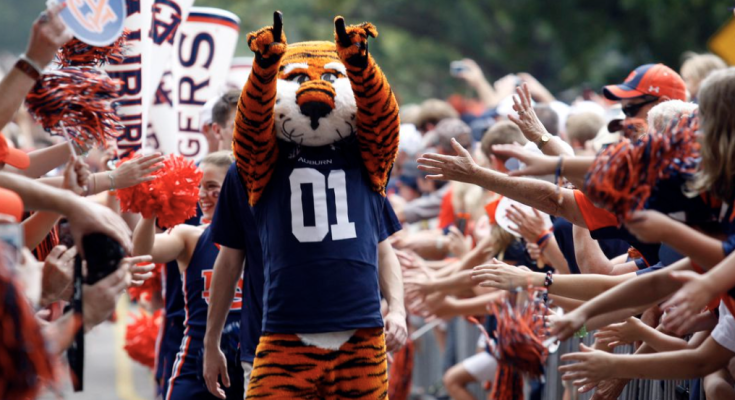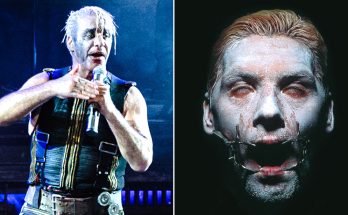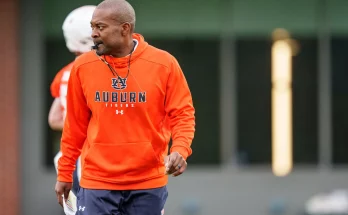From Ink to Icon: How Aubie Evolved into Auburn’s Living Spirit and the Nation’s Most Beloved Mascot
Before he ever danced across a football field, led roaring crowds into frenzy, or collected national mascot championships like trophies on a shelf, Aubie the Tiger was simply a drawing. A cartoon tucked into the pages of game programs, a whiskered character designed to cheer silently from the margins of Auburn University’s athletic culture. But in the decades since he first appeared in ink, Aubie has become something far greater—Aubie is no longer just a mascot. He’s a living embodiment of the Auburn spirit. A walking, roaring, tail-swinging icon.
And while most fans recognize Aubie today as the exuberant, striped showman with unmatched charisma, few know that his journey to that status began quietly, over twenty years before he ever donned the costume or stepped foot on a sideline. The path from paper to personality is one of creativity, community, and careful stewardship—a story that mirrors Auburn’s own evolution as a university committed to both tradition and bold reinvention.
Aubie’s origin traces back to 1959, when artist Phil Neel first illustrated the tiger for the Auburn football program cover. His design wasn’t just a generic animal—it was clever, expressive, and full of personality. In Neel’s hands, Aubie was never the same tiger twice. Sometimes mischievous, sometimes regal, always unmistakably Auburn. He was the humorous counterbalance to the tension of SEC football Saturdays. His appearances became so popular that fans began collecting the programs themselves, not for the stats or opponent breakdowns, but to see what Aubie would do next. Through the ‘60s and ‘70s, he became the unofficial face of Auburn athletics—without ever speaking a word or walking a step.
But by the late 1970s, students and alumni began asking the same question: What if Aubie could come to life?
The leap from cartoon to costume wasn’t a guaranteed success. At the time, mascot culture was far less developed than it is today. Costumed characters were often afterthoughts—clumsy figures with oversized heads and limited expression. But Auburn’s students and alumni saw an opportunity to do it differently. They didn’t want just any tiger in a suit. They wanted the Aubie they knew—the clever, playful, unpredictable tiger who had amused them in print for two decades. If Aubie was going to become “real,” he had to do it right.
That transformation happened in 1979, when Auburn introduced the first costumed Aubie to the public. Far from being a silent mascot who merely waved from the end zone, Aubie immediately displayed an uncanny ability to connect with fans. He didn’t talk, but he said everything with his body language. He didn’t sing, but he could steal the show. In his debut season, Aubie’s personality was clear: he was confident but never arrogant, silly without being slapstick, loyal without being too serious. He was Auburn, personified. Or rather—tigerfied.
The costume itself went through several iterations in those early years, constantly refined to better capture the spirit of Neel’s original artwork. More than just fur and foam, it had to move. It had to reflect the energy of the student inside it. And most of all, it had to give Aubie the room to evolve—not just as a costume, but as a character.
Over the next few decades, Aubie grew from sideline entertainment into a full-blown campus celebrity. He became a fixture at athletic events, pep rallies, charity drives, and student orientations. His humor became sharper, his timing better. He danced, he mocked rival mascots, he pulled off elaborate skits and pranks. And every year, a new Auburn student stepped into the suit, trained not just in performance, but in the philosophy of Aubie. To wear the stripes was an honor. And it came with a responsibility—not just to entertain, but to uphold a standard of excellence that made Aubie unique.
This commitment to authenticity helped propel Aubie into national fame. The Universal Cheerleaders Association began holding mascot competitions in the early 2000s, and it wasn’t long before Aubie dominated the field. As of 2025, Aubie holds ten national mascot championships—more than any other college mascot in the country. But his victories aren’t just about trophies. They’re about recognition. About peers and judges acknowledging that Aubie is something special. That he’s not just a school mascot—he’s a performer, a storyteller, an ambassador.
Ask any Auburn student or alum what Aubie means to them, and you’re likely to get a smile before you get an answer. He’s there in the best moments—when the Tigers upset a rival, when the band plays the fight song, when Toomer’s Corner is showered in white. But he’s also there in the quiet moments—at children’s hospitals, at campus events for new students, in photographs with three generations of Auburn families. Aubie is more than entertainment. He’s tradition in motion.
What makes him work is not just the costume or the choreography—it’s the careful management behind the scenes. Unlike many mascots, Aubie is not operated by a single performer or athletic department. He’s managed through the Aubie Program, a student-led team of performers, creative minds, and support staff who treat the role with reverence. Each new Aubie is selected through a rigorous process. Not everyone can be Aubie—not just because of the physical demands, but because of the precision required to preserve his unique style. Every move is intentional. Every interaction is part of a larger legacy.
This careful stewardship is why, even decades after his first live appearance, Aubie remains fresh. He never speaks, yet he says everything. He never ages, but he constantly evolves. Social media gave him new platforms to connect, and Aubie took to them with the same charisma he brings to stadiums. His posts are full of personality, his videos showcase his humor and creativity, and his interactions with fans often go viral—charming even those outside the Auburn family.
Yet for all his flash and fun, there’s a deeper truth that elevates Aubie above the rest. He represents the Auburn Creed in fur and stripes. He is hard work, he is humility, he is joy. He’s the reminder that even in a world of high-stakes athletics, tradition still matters. That laughter can unite a crowd just as powerfully as a touchdown. That identity isn’t just built on wins and losses—but on moments of shared pride.
In 2025, as Aubie continues to represent the university with unmatched passion, it’s worth remembering just how unlikely his journey has been. He wasn’t designed by a branding agency. He wasn’t born out of market research. He was drawn—literally—by an Auburn artist who saw in a tiger the potential for charm, courage, and character. And then, decades later, he was brought to life by students who saw something bigger. Not just a mascot, but a movement.
The tiger that once lived in the margins of a game program now roams the hearts of the Auburn family. He is in the chants, in the selfies, in the memories of every child who got a high-five or every alum who brought their grandkids to their first game. And while the performer inside the suit may change with the years, the spirit of Aubie remains timeless.
From paper sketch to sideline legend, from silent drawing to voice of the crowd—Aubie’s story is a masterclass in tradition, creativity, and community. Auburn didn’t just create a mascot. It created a symbol. A personality. A legacy that dances, gestures, and pantomimes its way into the soul of the campus.
Aubie is not just a tiger in a suit. He is Auburn.



